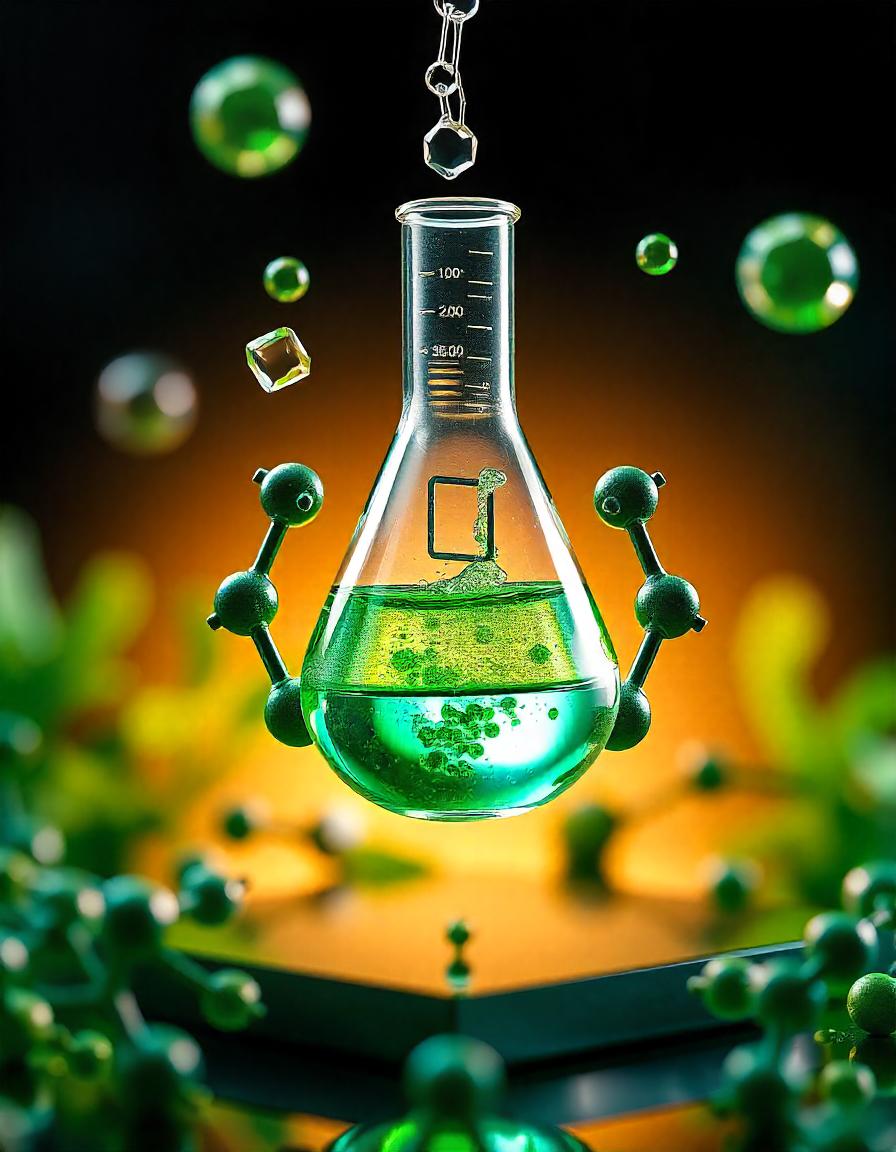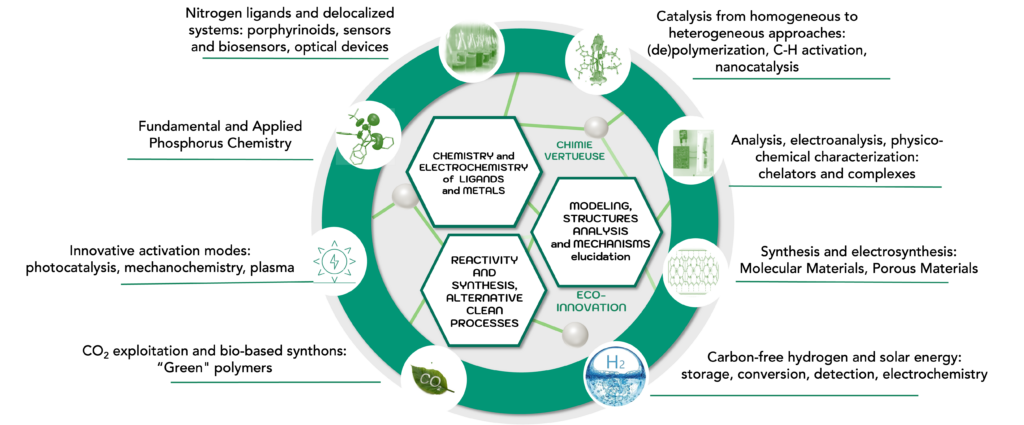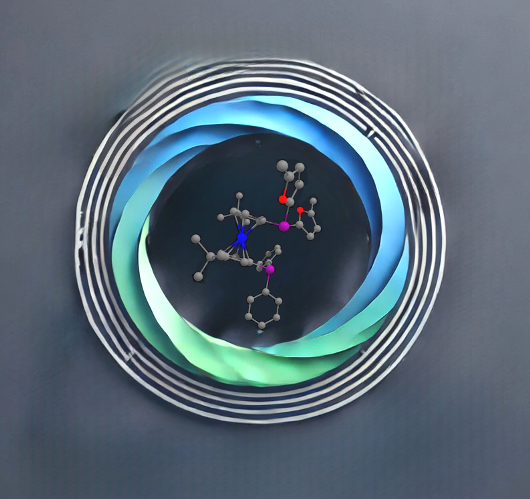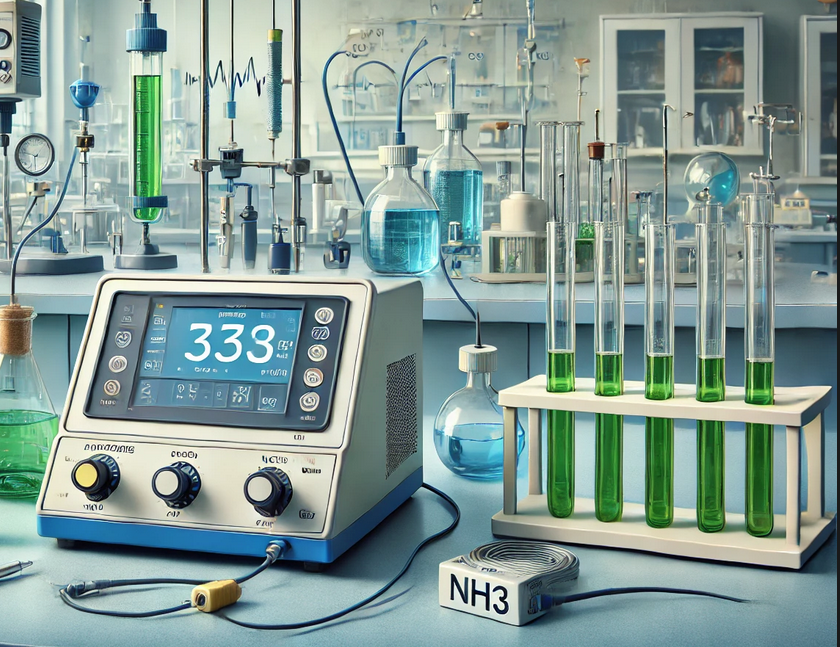
Molecular synthesis, Environment and Materials
Towards a more substainable chemistry
The SEM Department gathers the fundamental skills that are essential for improving the societal impact of the Unit towards a more virtuous chemistry. Its aim is to develop clean, atom-efficient synthetic chemistry that minimises waste and optimises resources, in order to converge towards common environmental and sustainable development objectives.
Coordinator : Pr. Marcel BOUVET

Structuration
The members of the SEM Department are grouped into two teams: CaPCoM for ‘Catalysis, Polymers, Coordination and Modelling’ and EMCAP for ‘Electrochemistry, Materials, Coordination, Analysis and Porphyrinoids’.
Research areas
From molecular synthesis to material conception, and from material to device design

In synthesis, these programmes focus on molecular species grouped into several major families of metal ligands (phosphorus and nitrogen in particular). They also aim to create new catalysts to establish new selective catalytic processes (in homogeneous or heterogeneous phases, by electrochemical, mechanochemical or photocatalytic means) in the presence of reagents or bio-based solvents.
The department’s strategy integrates the experimental approach with demanding modelling (in particular via theoretical chemistry and artificial intelligence) to study the structural, thermodynamic and kinetic parameters linked to the formation and dissociation processes of metal complexes and nanoconstructs, and the catalytic mechanisms (reactivity, selectivity, intermediates, transition structures, etc.), as well as the prediction of the properties of the targeted materials (photophysical, etc.).
The SEM Department’s projects range from fundamental synthetic approaches to breakthrough applications in the fields of the environment, agri-food, molecular detection and trapping, energy (hydrogen, solar) and health via inter-departmental projects.
Members of SEM department
Team leader: Raluca MALACEA (CR, CNRS)
- J. ROGER (responsable-adjoint, MCF)
- R. AMARDEIL (MCF)
- J. ANDRIEU (MCF)
- J. BAYARDON (MCF)
- A. BEILLARD (MCF)
- G. BONI (MCF)
- L. BRACHAIS (MCF)
- H. CATTEY (MCF)
- V. COMTE-CANDAS (MCF)
- J.-P. COUVERCELLE (PR)
- P. FLEURAT-LESSARD (PR)
- J.-C. HIERSO (PR)
- P. LE GENDRE (PR)
- A. NORMAND (CR, CNRS)
- M. PICQUET (MCF)
- N. PIRIO (PR)
- L. PLASSERAUD (CR, CNRS)
- S. POURCHET (MCF)
- C. BALAN (TCH, UBE)
- D. SABAT (IE, UBE)
- H. SABBADIN (AI, CNRS)
Team leader: Charles DEVILLERS (PR)
- L. ANDRÉ (CR, CNRS)
- M. BOUVET(PR)
- N. DESBOIS (MCF)
- C. GROS (PR)
- D. LUCAS (PR)
- M. MEYER (CR, CNRS)
- R. MEUNIER-PREST (CR, CNRS)
- J. SUISSE (MCF)
- S. BRANDÈS (IR, CNRS)
- S. FOURNIER (TCH, UBE)
- S. PACQUELET (TCH, UBE)

